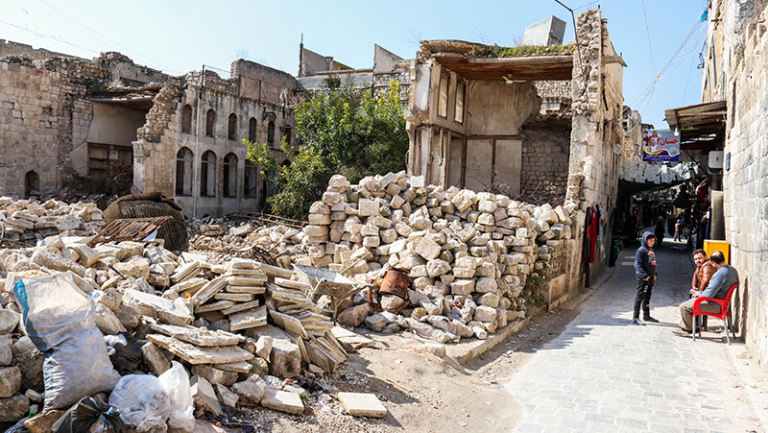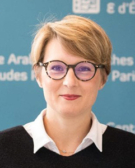
On September 24, 2025, interim Syrian president Ahmed al-Sharaa addressed the 80th United Nations General Assembly—the first time a Syrian president has done so since 1967. This historic appearance symbolized the end of an era—that of the Assad family’s rule—and the opening of a new chapter for Syria. Exhausted after more than a decade of civil war, sanctions, and social fragmentation, the country seems to be on the cusp of remaking itself. Yet building the new Syria is not solely a Syrian matter: it is shaped by the influence of external powers—the United States, Israel, the Gulf states, and Turkey—who seek to remodel the country according to their own strategic, security, and economic interests. The project thus extends beyond national reconstruction: it represents a genuine exercise in political and territorial engineering, where regional rivalries intersect with international ambitions.
A Transitional Authority under US-Gulf Influence
In May 2025, the first step toward the new Syria was taken in Riyadh during a meeting between Ahmed al-Sharaa, President Donald Trump, and Saudi Crown Prince Mohammed bin Salman. The symbolic staging—the gradual lifting of sanctions, promises of massive Gulf investments, and rhetoric of economic openness—was designed to turn the page on the Assad era and reinsert Damascus into the regional diplomatic game. This dynamic was accompanied by a reconfiguration of international relations: the forced gradual withdrawal of Iranian and Russian actors, the rise of American and Israeli interests, and the growing role of Gulf mediators. Saudi Arabia, in particular, at least partially positioned itself as the sponsor of reconciliation by taking charge of sensitive negotiations, notably those concerning normalization with Israel.
Yet behind this facade of regained sovereignty, the Syrian state remains deeply dependent on external support. The economic agenda reveals a reconstruction largely subcontracted to foreign capital: ports entrusted to Emirati investors, debts paid to the World Bank by Qatar and Saudi Arabia, and the prospect of Saudi financial injections.
Between Regional Normalization and Fragmentation
The illusion of a peaceful transition soon collided with Syrian realities. The March 2025 clashes on the coast first exposed the fragility of al-Sharaa’s authority. The July 2025 attempt to forcibly reintegrate the Druze-majority region of al-Suwayda triggered Israeli airstrikes and indirect support to local forces.
The confrontation in Suwayda underscored a paradoxical logic. While Israel presents itself as guarantor of minority security, its strategic objective goes far beyond temporary protection. It illegally occupies the Golan Heights and wants to extend a security buffer zone in southern Syria. Its government discussed dividing Syria into confessional federalized cantons and wanted to renegotiate the 1974 disengagement agreement. All these steps indicate that it seeks to reshape the territorial order to its north.
Meanwhile, Turkey is striving to avoid isolation. Fearing both Israel’s entrenchment near the Golan and the consolidation of Kurdish forces in the Syrian northeast, Ankara seeks to preserve Syrian unity as a way to safeguard its security interests and manage the refugee issue. However, its influence is increasingly counterbalanced by Gulf funding and mediation, which gradually sideline its role.
The Golan Question
At the heart of Syrian-Israeli potential negotiations lies the Golan Heights, a territory Israel occupied in 1967 and annexed in 1981, and a symbolic focal point of antagonism. Israel seeks to transform the entire area and the new territories it occupied in 2025 into a demilitarized security zone inside Syria, while maintaining its settlements in the occupied Heights. Al-Sharaa has said Syria is committed to negotiations and that economic and political concessions may be possible.
This dangerous balancing act on al-Sharaa’s part highlights the contradictions of the new Syrian state project: between the desire for sovereignty and implicit concessions to Israel, and between national reintegration and centrifugal pressures, equilibrium remains fragile. The prospect of gradual normalization with Israel—encouraged by Washington and supported by certain Arab states like the United Arab Emirates—may pave the way for regional stabilization, but at a steep political cost. The Syrian population, scarred by war but deeply opposed to any territorial concessions to Israel, is likely to perceive such compromises as a betrayal.
The Great Absentee of Civil Society
Amid these difficult conditions, Syrian civil society appears to be uninfluential. Indeed, debates over debt, investments, or Golan security largely take place behind closed doors, relegating many unofficial voices to the margins. Yet the fall of the Assad regime has opened an unprecedented window of opportunity for the gradual political revival of civil society.
The first legislative elections since the regime’s collapse are scheduled to begin on October 5, 2025 and will produce a new People’s Assembly. Despite an indirect and transitional voting system in which one third of the representatives will be appointed by the president, these elections represent a first step toward institutional legitimacy. The process includes provisions for women’s participation (a minimum 20 percent quota within electoral colleges) as well as local consultations. Although imperfect and closely monitored, the process signals that the interim government would like to initiate institutional reconstruction and to encourage citizen political participation. These elections will thus serve as a critical test of the new leadership’s commitment to building state institutions.
Conclusion
The new Syria resembles less an autonomous reconstruction project than a rebuilding of state institutions under foreign influence, where each regional power seeks to capitalize on the collapse of the old regime. Far from embodying a genuine process of national sovereignty, Ahmed al-Sharaa’s interim authority is entangled in multiple dependencies: financial to the Gulf, security-related to Israel, and political to Washington.
Nonetheless, the Syrian case reveals a more complex dynamic. While the country’s future is largely shaped by externally imposed arrangements, the initiation of an electoral process offers a glimmer of hope for civil society. Even though this vote is indirect and constrained by circumstances, it marks a first step toward the institutional reintegration of citizens.
The true “renaissance” of Syria will ultimately depend on its ability to transform this initial political opening into a lasting popular engagement. It will not emerge from foreign interference or externally imposed compromises but must stem from the unwavering will of Syria’s own civil society—the only source of genuine legitimacy. Popular participation is needed to break with the patterns of the past and transform the new assembly into the crucible of an independent and inclusive Syrian state.
The views expressed in this publication are the author’s own and do not necessarily reflect the position of Arab Center Washington DC, its staff, or its Board of Directors.
Featured image credit: Shutterstock/Trent Inness

